
If you have an ecommerce store, you’re competing not just with local shops but also with thousands of online stores from around the world. You need to optimize your store’s visibility through strategic SEO efforts to stand out. An Ecommerce SEO Audit can help you identify areas where you can improve and ensure your products reach your intended audience.
Google’s recent Helpful Content Update has further underscored the importance of user-centric content, making it imperative for ecommerce sites to adapt. This blog post aims to guide you through the nuances of conducting a comprehensive SEO audit that aligns with Google’s latest guidelines and sets your store up for enhanced visibility and sales.
Understanding Google’s Helpful Content Update
The digital landscape is continuously evolving, and with Google’s Helpful Content Update, the focus has shifted significantly towards enhancing user experience by rewarding content that genuinely addresses user needs. This update encourages web admins and content creators to prioritize creating content that offers real value rather than content designed primarily to rank well in search engine results. For ecommerce stores, product descriptions, blog posts, and all forms of content should be crafted with the user in mind, ensuring they are informative, engaging, and directly relevant to the audience’s queries.
This shift underscores the need for ecommerce sites to present their products effectively and build a content ecosystem around them that educates, informs, and entertains their prospective customers. The ultimate goal is to create a seamless blend of content that serves the user’s intent, drives engagement, and fosters a positive user experience, which can lead to improved SEO performance and higher conversions.
Let’s discuss adapting your ecommerce SEO strategy to align with these guidelines and enhance your store’s online presence.
Preparing for Your Ecommerce SEO Audit
Before diving into the nuts and bolts of an SEO audit, you must equip yourself with the right tools and a clear strategy. An effective audit involves a deep dive into various aspects of your ecommerce site, including its technical framework, content, and user experience, to identify opportunities for optimization.
Essential SEO Audit Tools:
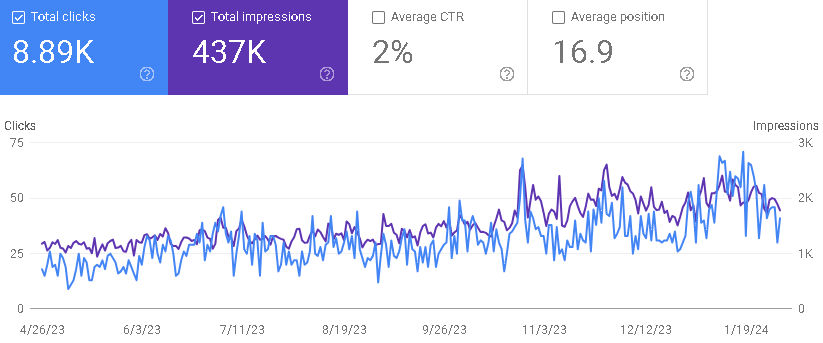
There are several alternatives, but these are our favorites.
- Google Analytics: Offers invaluable insights into your website’s traffic, user behavior, and conversion paths, helping you understand how visitors interact with your site.
- Google Search Console: Provides data on your site’s search performance, including impressions, clicks, and issues affecting your site’s visibility.
- Screaming Frog SEO Spider: A desktop tool that crawls your website’s URLs, mimicking how search engines view your site, to identify technical and on-page SEO issues.
- Semrush: A comprehensive SEO tool that helps with keyword research, competitive analysis, and tracking your site’s ranking for targeted keywords.
Armed with these tools, you can begin your audit by examining the technical health of your site, ensuring it’s crawlable and indexable by search engines. Then, assess your site’s content quality and relevance, ensuring it aligns with user intent and Google’s content guidelines. Finally, evaluate the user experience, including site speed, navigation, and mobile responsiveness, to ensure your site is user-friendly and conducive to conversions.
By methodically addressing these areas, you can uncover and rectify issues hindering your ecommerce site’s performance in search rankings, setting the stage for improved visibility and increased sales.
Ecommerce Technical SEO Audit
A solid SEO foundation is crucial for any structure to stand tall, and the same applies to your ecommerce website. A technical SEO audit addresses your site’s infrastructure, ensuring it’s built in a way that search engines can easily understand and rank. Here are key areas to focus on during your technical SEO audit:
Site Structure and Accessibility
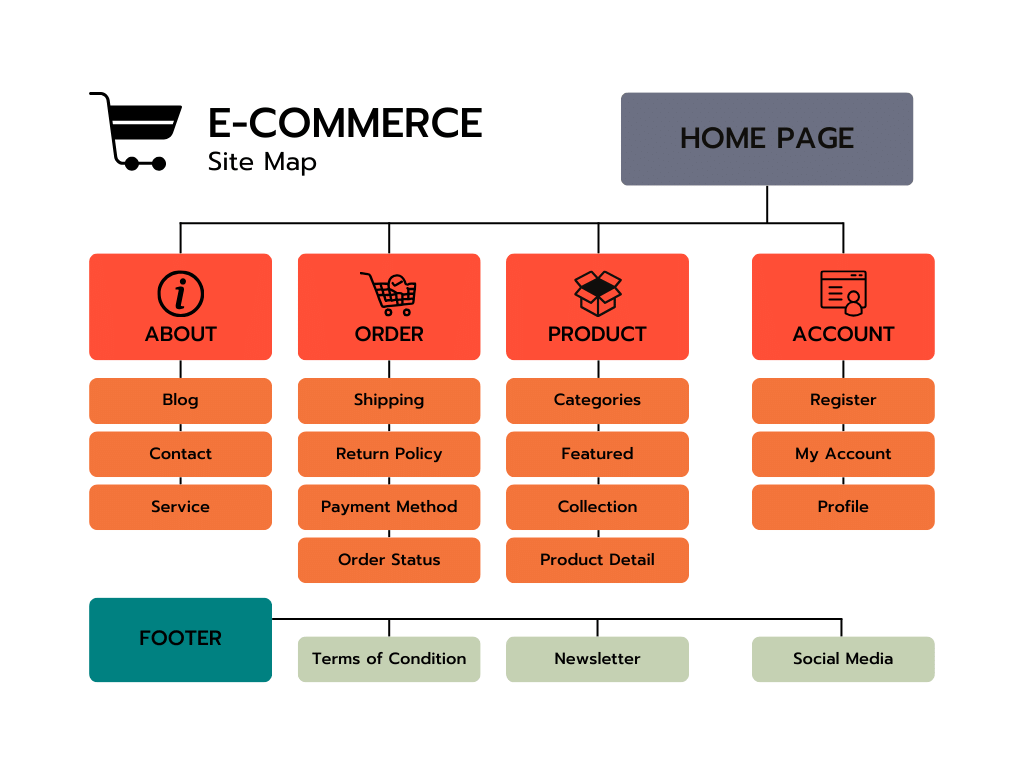
Your site’s architecture should make navigating easy for users and search engines. An intuitive navigation structure and clear URL hierarchy help search engines understand and rank your site’s content. Ensure your URLs are concise descriptive, and include relevant keywords where appropriate. Use tools like Screaming Frog SEO Spider to crawl your site and identify broken links, redirects, and errors that could hinder accessibility.
Mobile Optimization
With Google’s mobile-first indexing, ensuring your site is optimized for mobile devices is non-negotiable. Google Search Console can help identify mobile usability issues, ensuring your site offers a seamless experience across all devices.
Page Speed Analysis
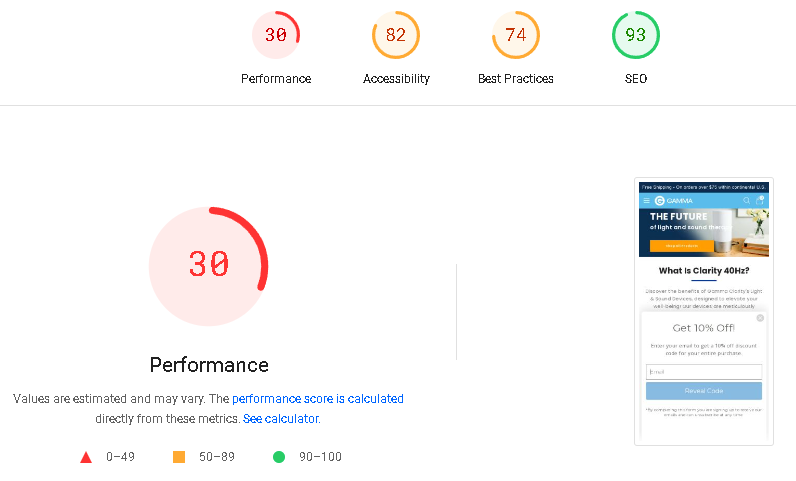
Site speed is a critical factor for both SEO and user experience. Utilize PageSpeed Insights to pinpoint elements that slow down your site and follow the recommendations to improve loading times.
Secure Browsing
Transitioning to HTTPS secures your site and contributes to your SEO efforts. Ensure all pages are properly secured to build trust with your users and search engines.
Focusing on these technical aspects ensures your site is crawlable, indexable, and poised for higher rankings in search engine results pages (SERPs). Addressing these foundational issues sets the stage for more detailed content and user experience optimizations.
Ecommerce Content Audit
A comprehensive content audit goes beyond assessing the quality and relevance of your text. It involves thoroughly examining your ecommerce site’s product pages and blog content, ensuring they’re optimized for search engines and user experience.
Optimizing Core Pages
Core pages are often the first point of contact between your ecommerce store and potential customers. They set the tone for your brand and provide essential information that helps visitors decide to explore further. Here’s how to optimize these pages:
- Clear, Concise Messaging: Ensure your core pages clearly communicate your brand’s mission, values, and unique selling propositions.
- Transparency: Include detailed information about your business, team, and operations on your “About Us” page to build transparency and trust.
- Contact Information: Make it easy for visitors to find contact information, reinforcing the legitimacy of your business.
Product Page Optimization
Product pages are the lifeblood of your ecommerce site, directly influencing conversions and sales. Here’s how to optimize them:
- Keyword Optimization: Ensure each product page targets specific, relevant keywords that potential customers might use to find your products.
- Compelling Product Descriptions: Move beyond generic descriptions by creating unique, engaging content that highlights the benefits and features of your products.
- High-Quality Visuals: Use clear, high-resolution images and videos to showcase your products, as these can significantly impact user engagement and conversion rates.
- User Reviews and Ratings: Incorporate customer reviews and ratings to build trust and provide social proof, which can positively affect purchasing decisions.
Leveraging Blog Posts for SEO
Your blog plays a pivotal role in your overall SEO strategy, driving traffic and supporting product pages through:
- Highlighting Products: Craft blog posts that naturally feature and link to your product pages, providing context and additional value to your readers.
- Internal Linking: Use strategic internal linking within your blog posts to distribute page authority across your site and help index your product pages.
- Content Themes: Develop themes or series that align with your product categories, ensuring your blog content is relevant and supports your overall ecommerce strategy.
By focusing on these elements, you can ensure your content attracts visitors and guides them through the buyer’s journey, from initial awareness to final purchase.
Optimizing for Google E-E-A-T
Google’s emphasis on Experience, Expertise, Authoritativeness, and Trustworthiness (E-E-A-T) makes it imperative for ecommerce sites to demonstrate these qualities across all content:
- Showcasing Expertise: Use your core pages to highlight your team’s expertise and experience in your industry, underscoring your authority in your niche.
- Building Authoritativeness: Incorporate testimonials, certifications, and accolades to establish your brand’s authority and reliability.
- Cultivating Trust: Implement security features (SSL certificates, privacy policies) and transparently present your business practices to enhance trustworthiness.
The principle of providing valuable, high-quality content that satisfies user needs applies universally across your ecommerce site. Whether it’s a blog post, a product description, or core page content, ensuring that your content is informative, engaging, and user-focused is critical to improving your site’s SEO and user experience.
By focusing on these aspects, you can create a solid foundation for your ecommerce site, optimizing for Google’s E-E-A-T guidelines and building a trustworthy online presence that resonates with search engines and your target audience.
Ecommerce Off-Page SEO Audit
Off-page SEO is about enhancing your ecommerce site’s visibility and authority beyond its pages. This involves strategies that improve your site’s perception among users and search engines, primarily through link-building and social media engagement.
- Link Building: Acquiring high-quality backlinks from reputable sites within your industry signals to search engines that your site is a valuable resource, boosting your site’s authority.
- Social Media Engagement: Active participation on social media platforms can drive traffic to your site and increase brand awareness. Sharing valuable content and engaging with your audience can indirectly benefit your site’s SEO by generating social signals that search engines may consider.

Data source: https://www.marketingcharts.com/digital/social-media-113405
Competitive Analysis
A thorough competitive analysis provides insights into how your ecommerce site stacks up against its competitors in the SERPs. This analysis can uncover successful competitors’ strategies, which you can adapt and improve upon for your site.
- Benchmarking: Use tools like Semrush to compare your site’s keyword rankings, backlink profile, and content strategy against your competitors.
- Identifying Gaps: Look for content or keyword gaps where competitors outperform you. This can reveal opportunities for your site to fill those gaps and capture additional traffic.
- Best Practices: Analyze the off-page strategies of top-performing competitors, including their link-building approaches and social media engagement tactics, to identify practices that could benefit your site.
By focusing on these off-page SEO considerations and conducting a detailed competitive analysis, you can develop a more informed and effective SEO strategy that enhances your site’s visibility and authority and positions it more competitively in the ecommerce landscape.
Measuring SEO’s Impact on Visibility and Sales
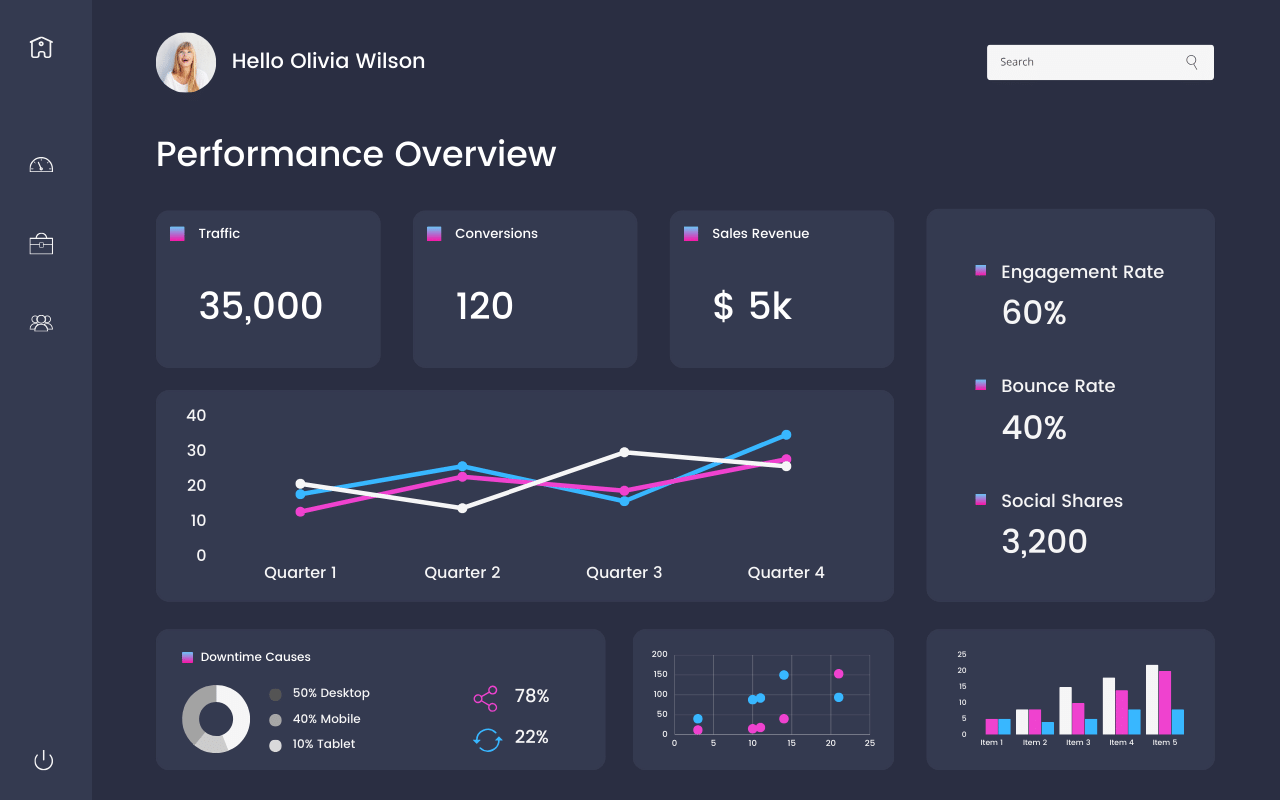
To gauge your SEO strategies’ effectiveness, measuring their impact on your ecommerce store’s visibility and sales is essential. Utilizing Google Analytics, you can track a variety of metrics that provide insights into your SEO performance:
- Organic Traffic: Monitor the volume of visitors coming to your site through organic search results, indicating the reach and effectiveness of your SEO efforts.
- Conversion Rate: Assess how well your organic traffic converts into sales or desired actions, highlighting the quality and relevance of your traffic.
- Bounce Rate: Analyze the percentage of visitors who leave your site after viewing only one page. A high bounce rate may indicate that your site’s content or user experience needs improvement.
- Engagement Rate: GA4’s engagement rate offers insights into active user interactions, including session duration and page views, highlighting the effectiveness of content and user experience.
Setting Up the Buyer’s Journey for Maximum Impact
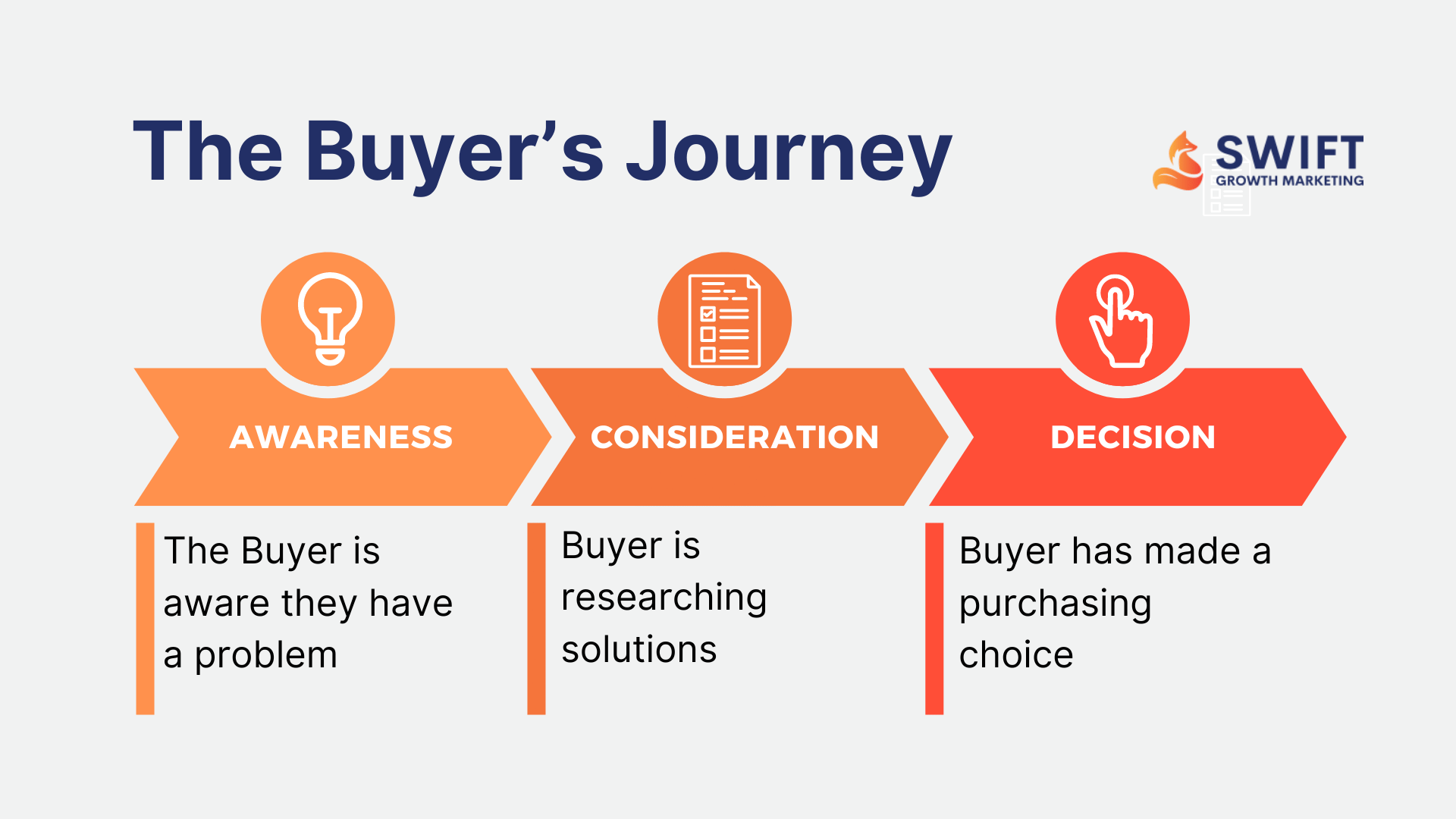
Optimizing the buyer’s journey on your ecommerce site is crucial for maximizing conversions and enhancing user experience. This involves ensuring that each stage of the journey, from awareness to decision, is seamlessly integrated and optimized for engagement:
- Awareness Stage: Use informative blog content and optimized landing pages to attract potential customers to your site.
- Consideration Stage: Provide detailed product descriptions, comparisons, and reviews to help visitors evaluate your offerings.
- Decision Stage: Streamline the checkout process and offer clear calls-to-action (CTAs) to facilitate the purchase decision.
Competitive Analysis: Benchmarking and Strategy Refinement
A comprehensive competitive analysis is vital for understanding your position in the market and identifying areas for improvement:
- Visibility: Compare your site’s visibility in search results with your competitors, identifying high-performing keywords and content gaps.
- Backlink Profile: Analyze the quality and quantity of backlinks pointing to your competitor’s sites to inform your link-building strategy.
- Content Strategy: Evaluate your competitors’ content strategies, including the frequency and quality of blog posts and product page content, to identify best practices and areas for innovation.
By measuring the impact of your SEO efforts and continuously refining your strategies based on performance metrics and competitive insights, you can enhance your ecommerce store’s visibility, improve user engagement, and ultimately drive more sales.
Should You Outsource Your Ecommerce SEO Audit?
When considering outsourcing your Ecommerce SEO Audit, selecting a reputable growth marketing agency with a proven track record in ecommerce optimization is crucial. Look for agencies that offer:
- Comprehensive audits covering technical SEO, content, user experience, and off-page factors.
- Clear communication and detailed reporting on findings and recommendations.
- Case studies or testimonials from past clients, particularly in the ecommerce sector.
Benefits of outsourcing include accessing specialized expertise, saving time and resources, and gaining objective insights into your SEO performance, all of which can lead to more effective optimizations and improved results.
Key Takeaways
SEO is crucial for boosting your ecommerce store’s visibility and sales. Align with Google’s guidelines, especially the Helpful Content Update, prioritizing user-centric content.
Conduct a comprehensive SEO audit
- Technical SEO: Ensure seamless crawling and indexing by search engines.
- Content audit: Optimize product pages, blog posts, and core pages for user intent and SEO.
- Off-page SEO: Build backlinks and engage on social media to boost authority.
Focus on
- Clear, concise messaging and product descriptions.
- High-quality visuals and user reviews.
- Keyword optimization and internal linking.
- Experience, Expertise, Authoritativeness, and Trustworthiness (E-E-A-T).
Measure SEO impact
- Track organic traffic, conversion rate, bounce rate, and engagement rate.
- Benchmark against competitors and refine strategies based on insights.
Consider outsourcing for specialized expertise and objective analysis, and remember, SEO is an ongoing process. Adapt and improve for lasting success.
Conclusion
Conducting a comprehensive Ecommerce SEO Audit is pivotal for enhancing your online store’s visibility, improving user engagement, and driving sales. By closely aligning with Google’s guidelines, particularly the Helpful Content Update, and optimizing every aspect of your site—from technical infrastructure to content quality—you set the foundation for a robust online presence. Remember, SEO is an ongoing process; continuous monitoring, analysis, and adjustment in line with evolving best practices are key to staying ahead in the competitive ecommerce landscape.
Ready to elevate your ecommerce store’s SEO strategy? Partner with Swift Growth Marketing to navigate the complexities of SEO audits and optimizations, ensuring your store meets and exceeds modern SEO standards. Contact us today!

